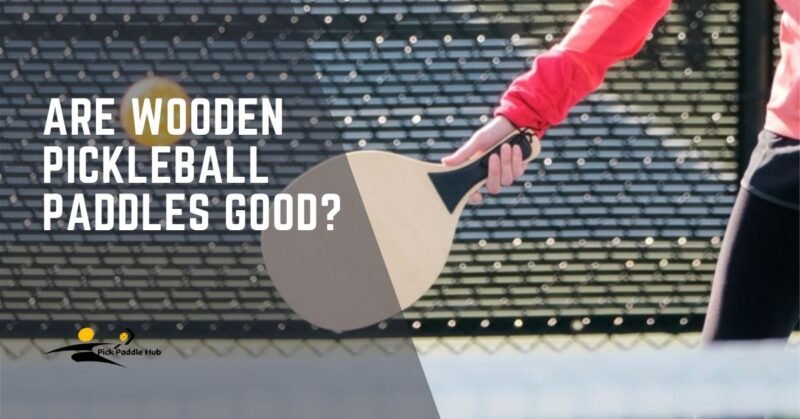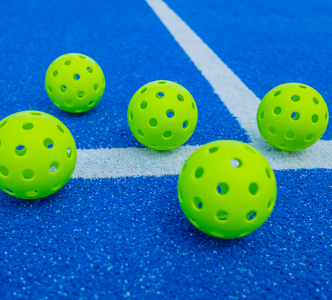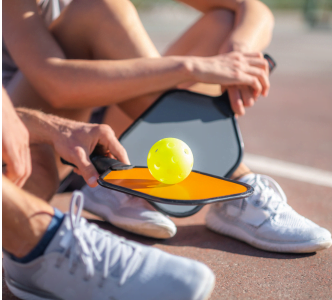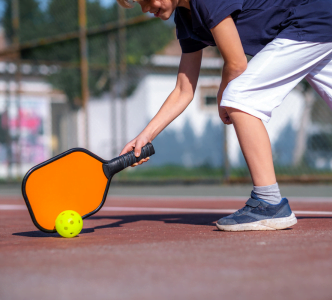Pickleball has come a long way since its inception, and so have the paddles used in the game. Initially, players only had wooden pickleball paddles to choose from. These paddles were simple, crafted from basic wood, marking the humble beginnings of the sport.
Over time, as pickleball gained popularity, the demand for more sophisticated equipment grew. This led to the introduction of paddles made from advanced materials like graphite and composite, offering players a variety of options to suit their playing style.
Despite these advancements, the question remains: are wooden pickleball paddles good? Let’s delve into the journey from wooden paddles to the modern era, exploring how this transition has impacted the game.
Below we’ll go over the key pros and cons of using a wooden pickleball paddle to help you decide if it’s the right choice for you.
Are Wooden Pickleball Paddles Good?
Ever found yourself pondering, “Are wooden pickleball paddles worth it?” It’s a common question, especially among those just dipping their toes into the sport or folks intrigued by a touch of tradition. Let’s dive into this topic together.
Wooden paddles, they’ve got a certain nostalgia, right? They take us back to the roots of pickleball when the game was all about simplicity. But, don’t be misled by their straightforward appearance; these paddles pack some serious advantages.
For newbies, wooden paddles are an excellent choice. They’re budget-friendly and tough as nails. You won’t have to empty your wallet, and they’ll stand up to those beginner bumps and scrapes. Plus, there’s a bit of magic in the weight of a wooden paddle. It lends your shots extra oomph, making the ball soar across the court with a deeply satisfying sound.
But, it’s not without its downsides. The heft of wooden paddles, great for power, might wear you out during long matches. And about the noise – yeah, wooden paddles can be on the louder side, which might not be everyone’s favourite.
So, are wooden pickleball paddles good? To me, they’re like a beloved, old sweater: not the most dazzling or advanced, but dependable and effective. Whether they suit you best depends on what you’re after in your pickleball journey.
Are Wooden Pickleball Paddles Legal?
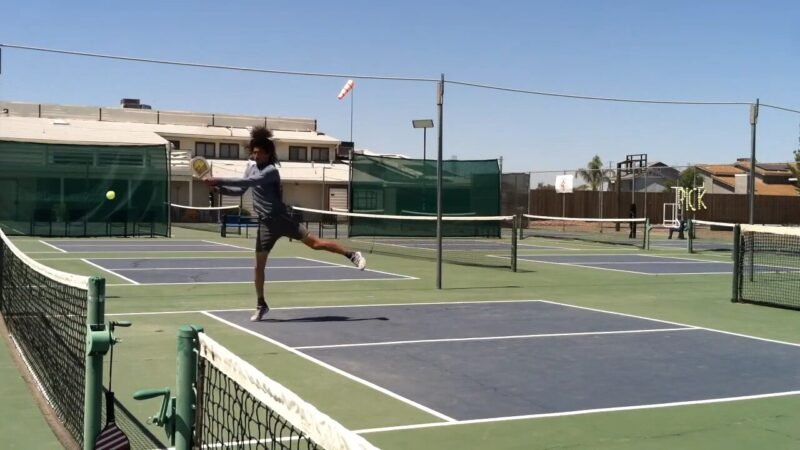
There are differences in paddles some are legal and some of them are not, but Yes, wooden pickleball paddles are indeed legal to use in official games and tournaments. The rules governing pickleball equipment are set by organizations like the USA Pickleball Association, which specifies the standards paddles must meet regarding size, shape, and material.
Wooden paddles fall within these regulations, making them perfectly acceptable for competitive play. Their use is not restricted by any rule solely because of the material they are made from. This inclusivity ensures that players can choose equipment that best suits their preferences and budget, including the traditional wooden paddle.
The legality of wooden paddles in pickleball highlights the sport’s accessibility and versatility. While modern paddles made from composite or graphite materials offer benefits like lighter weight and enhanced playability, the wooden paddle remains a viable option for those who prefer its feel or are just starting.
Players need to select a paddle that not only complies with official regulations but also matches their playing style and comfort. Wooden paddles, with their rich history in the sport, continue to be a testament to pickleball’s inclusive spirit.
Pros of Wooden Pickleball Paddles
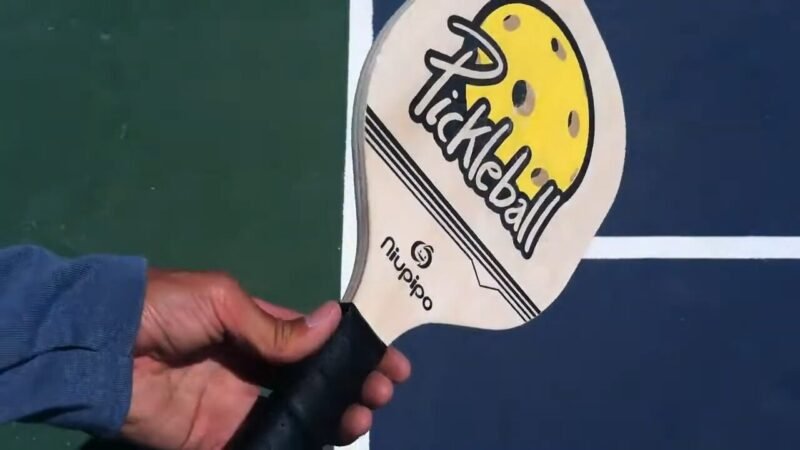
Affordability
For those who say pickleball paddles are expensive, one of the most significant advantages of wooden pickleball paddles is their cost-effectiveness. They are typically the most affordable option on the market, making them an excellent choice for beginners or those who are not ready to invest a lot of money into their gear. This affordability allows new players to try out the sport without a significant financial commitment.
Durability
Wooden paddles are known for their robustness. They can endure rough play and accidental drops much better than some of the more delicate materials used in other types of paddles. This durability means they can last a long time, providing good value for the money spent.
Power
Due to their weight, wooden paddles can offer players more power behind their shots. This can be particularly advantageous for those who prefer a power game or who are still developing their technique and can benefit from the extra momentum the paddle provides.
Provide Good Control
Wooden paddles promote a high degree of control and finesse. The wood surface generates spin and touch shots nicely, allowing you to place the ball accurately. This helps develop the proper technique. The wood also provides a good feel for the ball impact compared to stiffer graphite faces.
Traditional Ping Sound
Nothing beats the classic “pong” sound of a wooden paddle hitting a pickleball. The wood creates a nostalgic auditory experience reminiscent of table tennis and old-school paddle sports.
Customizable Appearance
You can make a pickleball paddle and stain or paint a wooden paddle any colour you like. Add some personal flair with intricate designs. Wood allows for custom artwork that is not possible on an aluminum or graphite surface.
Vintage Looks
Wooden paddles look classic and traditional, reminding many players of vintage ping pong paddles. If you appreciate old-school sports equipment, wood delivers on aesthetics.
Cons of Wooden Pickleball Paddles
Not as Durable
The main downside of wood is that it lacks the durability of advanced materials like graphite. Continual play causes the faces to chip and dent over time. Wood is also susceptible to warping or cracking, especially when exposed to humidity or dramatic temperature changes.
Weight
The very feature that adds power to shots — the paddle’s weight — is also a disadvantage. Wooden paddles are generally heavier than their graphite or composite counterparts, which can lead to quicker arm fatigue, potentially affecting a player’s performance during longer matches or with frequent play.
Noise
Wooden paddles tend to produce more noise when striking the ball compared to other materials. This increased noise level can be a drawback in noise-sensitive environments or communities where pickleball’s sound is a concern.
Less Power
Compared to paddles made with modern materials, wooden paddles don’t generate as much power or spin on shots. While wood provides control, you’ll be sacrificing some pop which can limit your offense. The lightness of graphite gives better acceleration through the ball.
Can Warp
As mentioned earlier, wooden paddle faces are prone to warping or cracking, especially when subjected to high heat and humidity. Leaving a wood paddle in a hot car or garage can ruin the hitting surface over time as it loses its integrity and shape.
Limited Styles
You’ll have far fewer shape, style, and size options with wood paddles compared to other materials. Graphite paddles come in a wide selection of head sizes, face shapes, grip lengths and widths. Wood limits you mostly to traditional rounded or teardrop faces.
Lack of Technological Advancements
Wooden paddles lack the technological enhancements found in modern paddles, such as improved aerodynamics, edge guards, and vibration-dampening technologies. This means players might not experience the same level of control, spin, or comfort during play.
Potential Medical Issues
The combination of a heavier weight and the lack of vibration dampening can contribute to medical issues such as tennis elbow or muscle strain. Players who are prone to these conditions or who play frequently may find that wooden paddles exacerbate these problems, affecting their ability to play comfortably and safely.
Comparing Wooden to Modern Paddle Materials
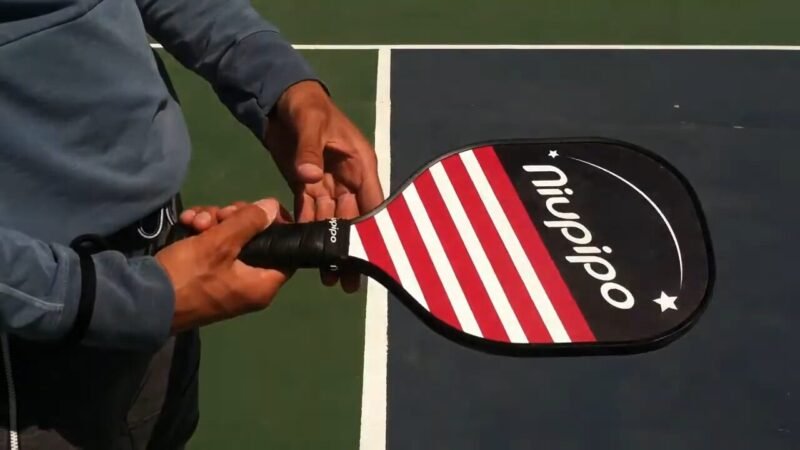
When comparing pickleball paddles, it’s essential to understand how different materials can affect your game. Wooden paddles, graphite paddles, and composite paddles each have unique characteristics. Here’s a detailed comparison, including a grading system for key attributes to help you decide which type might suit your playing style best.
| Attribute | Wooden Paddles | Graphite Paddles | Composite Paddles |
|---|---|---|---|
| Cost | A (Most Affordable) | B (Moderate) | B to C (Varies) |
| Durability | A (Very Durable) | B (Durable) | B (Durable) |
| Power | B (Good Power) | B (Balanced Power) | A (High Power) |
| Control | C (Less Control) | A (High Control) | A (High Control) |
| Weight | C (Heavier) | A (Lightweight) | B (Moderate) |
| Comfort | C (Basic) | A (Ergonomic) | A (Ergonomic) |
| Noise Level | C (Louder) | A (Quieter) | B (Moderate) |
| Technology | C (Limited) | A (Advanced) | A (Advanced) |
Wooden Paddles
- Pros: Cost-effective and durable, wooden paddles are ideal for beginners, schools, and community centers due to their affordability and robustness. They offer good power, making them suitable for players who prefer a forceful game.
- Cons: The main drawbacks include their weight, which can lead to quicker fatigue, and their basic grip designs, which may not be as comfortable for prolonged play. They also tend to be noisier and offer less control and spin capabilities.
Graphite Paddles
- Pros: Graphite paddles are known for their lightweight design, offering excellent control and precision. They are comfortable to use, reduce noise, and incorporate advanced technology for improved playability. Ideal for players seeking performance and finesse in their game.
- Cons: These paddles can be more expensive than wooden ones and may not offer the same level of power as heavier paddles.
Composite Paddles
- Pros: Composite paddles strike a balance between power and control, making them versatile for various playing styles. They are durable, offer ergonomic grips, and can be designed to reduce noise. These paddles are suitable for players looking for a mix of power and control with moderate weight.
- Cons: Prices for composite paddles can vary widely, potentially making them less accessible for beginners. They may also not match the lightweight feel of graphite paddles or the raw power provided by wooden ones.
Key Factors When Selecting a Wooden Paddle
If you do opt to go the wooden paddle route, keep the following factors in mind when selecting one:
- Weight – Look for a paddle in the 7 to 8-ounce range. Any heavier starts to get fatiguing. Lighter than 7oz can sacrifice stability.
- Grip – Make sure the grip width and circumference suit your hand size. An uncomfortable grip will hinder your play.
- Face Material – Some wood paddles have composite or graphite faces which enhance power and durability.
- Face Shape – Rounded edges provide more control whereas elongated heads offer a wider sweet spot.
- Balance – Midweight balance provides optimal manoeuvrability for all-around play.
Pro tip: If you are a beginner and want to make your DIY pickleball paddle read our step-by-step guide about, How to make a pickleball paddle.
Who Should Use Wooden Pickleball Paddles?
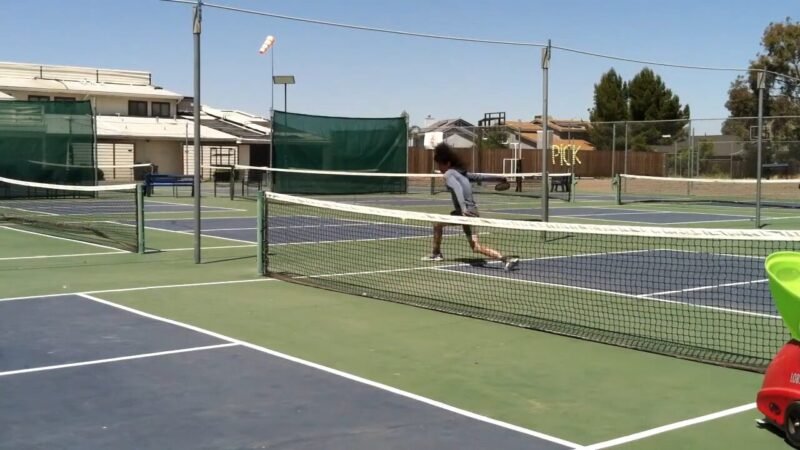
Wooden pickleball paddles, with their unique blend of affordability, durability, and power, are particularly well-suited for specific groups of players and settings. Understanding who can benefit the most from these paddles can help in making informed decisions when choosing equipment.
Beginners
For those just starting their pickleball journey, wooden paddles are an excellent choice. Their affordability makes them accessible, reducing the barrier to entry for trying out the sport. Additionally, the durability of wooden paddles means that beginners can practice extensively without worrying about wear and tear as they hone their skills.
Young Players
Children and teenagers who are new to pickleball might not yet be ready to handle more expensive equipment with care. Wooden paddles, being both sturdy and inexpensive, are ideal for young players. They can withstand the rough handling that sometimes comes from youthful enthusiasm, making them a practical option for this age group.
Schools
Educational institutions that introduce pickleball as part of their physical education curriculum need equipment that can endure constant use by multiple students. Wooden paddles, with their robust construction, can survive the demands of a school setting. Their cost-effectiveness also allows schools to purchase enough paddles for large groups of students without straining their budgets.
Community Centers and Recreational Programs
Similar to schools, community centers and recreational programs that offer pickleball need durable and affordable equipment to accommodate participants. Wooden paddles fit this need perfectly, providing a cost-effective solution for programs that aim to make pickleball accessible to everyone in the community.
Players Preferring Power in Their Game
Some players, regardless of their skill level, prefer paddles that add power to their shots. Wooden paddles, being heavier, can offer this advantage, making them a suitable choice for players who prioritize strength over speed in their playing style.
Conclusion
Now you know better whether wooden pickleball paddles are good or not.
the choice between wooden, graphite, and composite pickleball paddles boils down to personal preference, playing style, and budget considerations. Wooden paddles, with their affordability and durability, serve as an excellent entry point for beginners or as reliable options for schools and community centers.
Graphite paddles, on the other hand, offer superior control and comfort, catering to players who prioritize precision and finesse in their game. Composite paddles strike a balance between power and control, making them versatile choices for players seeking a middle ground.
Understanding the benefits and drawbacks of each material can significantly influence your decision-making process. Whether you value the traditional feel and power of wooden paddles, the lightweight precision of graphite, or the balanced performance of composite paddles, there’s a paddle out there that’s perfect for your needs. Remember, the best paddle is one that feels right in your hands, complements your playing style, and ultimately, enhances your enjoyment of the game.
FAQ’s
Can beginners use wooden pickleball paddles?
Yes, wooden pickleball paddles are an excellent choice for beginners. They are affordable, durable, and provide a good introduction to the game. Their heavier weight can also help new players get a feel for hitting the ball with power.
Are graphite paddles better than wooden ones?
Graphite paddles offer different benefits compared to wooden ones, such as lighter weight and better control. “Better” depends on your needs; if you seek precision and comfort, graphite might be preferable. However, for durability and cost-effectiveness, wooden paddles excel.
What is the main advantage of composite pickleball paddles?
The main advantage of composite paddles is their versatility. They offer a good balance of power and control, making them suitable for players of all levels. They also come in various weights and designs, allowing for customization to your playing style.
Do wooden paddles provide less control than modern paddles?
Generally, yes. Wooden paddles tend to offer less control than graphite or composite paddles due to their basic construction and heavier weight. Modern paddles often feature materials and designs that enhance ball control and spin.
Why are graphite paddles more expensive than wooden ones?
Graphite paddles are more expensive due to the cost of materials and the technology involved in their design and construction. They are lighter, offer better control, and often incorporate features that improve playability and comfort.
Can the weight of a paddle affect my game?
Absolutely. The weight of a paddle can significantly impact your game, affecting your swing speed, control, and the power behind your shots. Lighter paddles, like graphite ones, allow for quicker movements but may offer less power. Heavier paddles, such as wooden ones, provide more power but can lead to faster fatigue.
Are there any rules about paddle materials in official pickleball tournaments?
Yes, there are regulations regarding paddle materials in official tournaments. Paddles must not have any characteristics that allow a player to impart undue spin on the ball, and they must meet specific size and surface roughness standards. However, both wooden and modern materials like graphite and composite are generally allowed.

